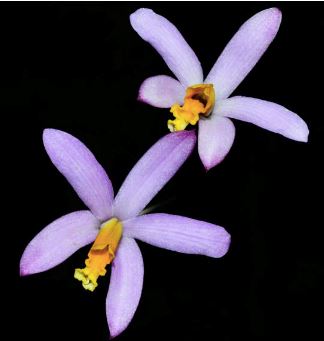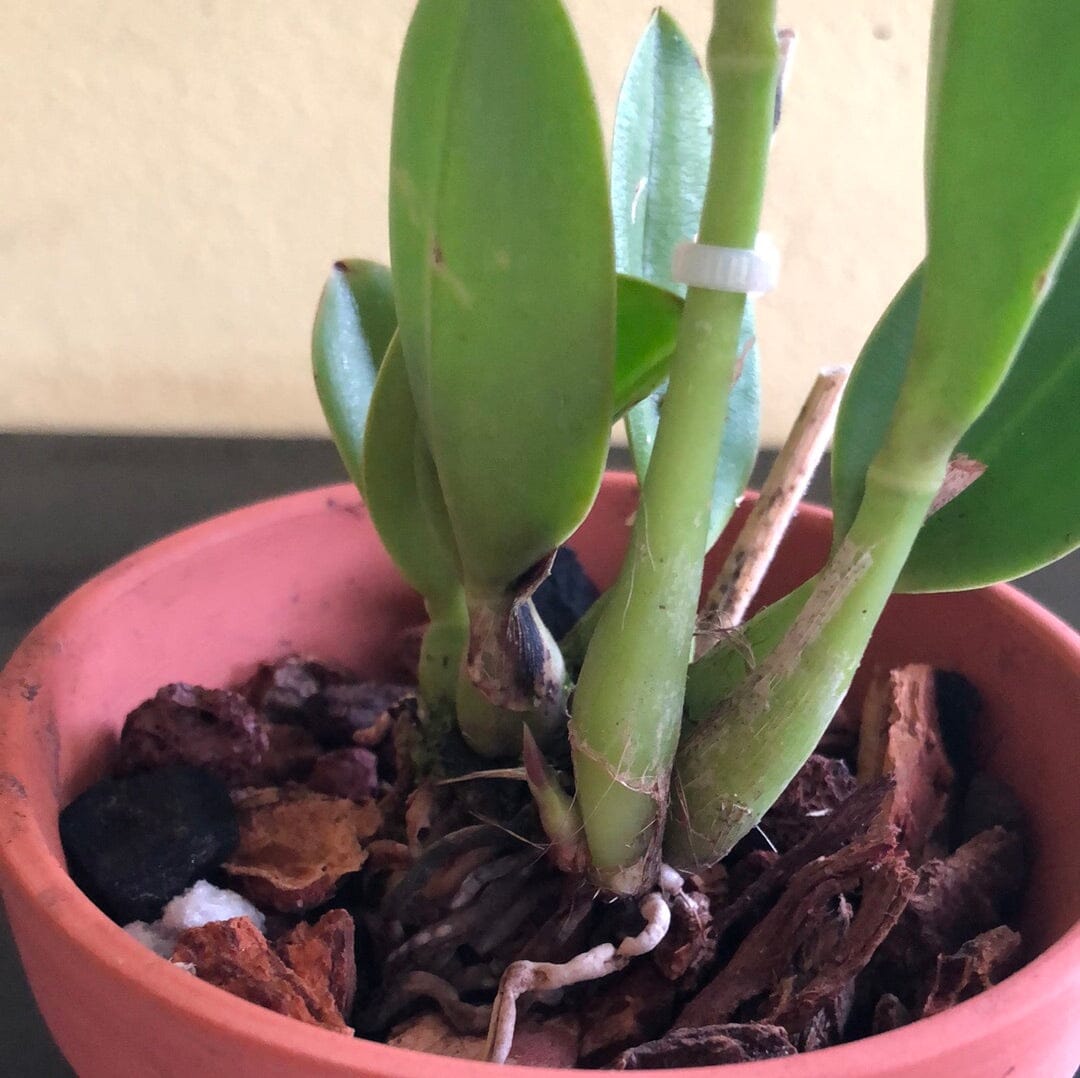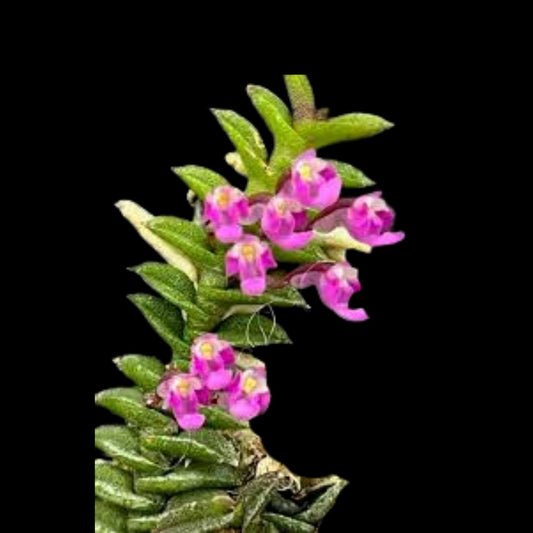La Foresta Orchids
Cattleya longipes x Cattleya milleri
Cattleya longipes x Cattleya milleri
No se pudo cargar la disponibilidad de retiro
Introducing Cattleya (Laelia) longipes x Cattleya (Laelia) milleri
Are you ready to elevate your orchid collection to new heights? We're excited to present two unique and exquisite species, Hoffmannseggella (Laelia) longipes x Hoffmannseggella (Laelia) milleri, known for their rupiculous or rock-growing nature. These orchids are a part of the new genus Hoffmannseggella, and each offers its captivating features, making them true gems for orchid enthusiasts.
Hoffmannseggella (Laelia) longipes: Hoffmannseggella (Laelia) longipes, also known as the Long-Peduncled Laelia, is a miniature-sized, cool to cold-growing, lithophytic species. It features narrowly oblong or conical pseudobulbs, measuring 2-4 cm in length. Each pseudobulb carries a single, erect, dark green leaf, reaching 3-5 cm in length. This orchid's compact growth is accentuated by new growths produced close to the last growth.
Hoffmannseggella (Laelia) milleri: Hoffmannseggella (Laelia) milleri, also known as Miller's Laelia, is a miniature-sized warm to cool-growing lithophyte. It is characterized by clustered, flask-shaped pseudobulbs, which are 6 cm high and widest at the base. Each pseudobulb carries a single, ovate-oblong, rigid, dark green leaf, which is often tinged with purple and keeled below, measuring 10 cm in length. The foliage of most plants has a deep maroon flush, particularly on the backs of the leaves.
Cultivation Tips:
-
Light: Provide Hoffmannseggella (Laelia) longipes and Hoffmannseggella (Laelia) milleri with good light, around 30,000 to 40,000 lux. Aim for 30-50% shade during the summer, ensuring no direct sun. During their dormant winter period, they thrive in high light intensity, particularly in the morning sun.
-
Temperature: Maintain a temperature range of 16°C to 24°C, with winter temperatures around 12°C. Protect them from temperatures below 8°C.
-
Humidity: These orchids thrive with year-round good air movement. Aim for moderate to high humidity (50-70%) in the summer but reduce humidity during the winter.
-
Substrate and Repotting: These orchids are typically grown in pots. Consider adding pieces of sandstone to the potting mix if root growth is a concern. Always use the smallest pot possible to prevent root rot. Over-potting, where the plant and its pot are placed into a slightly larger pot, can be an effective solution when the orchid outgrows its container. Repotting may be necessary when the potting mix becomes decomposed.
-
Watering: During the summer and autumn months, water regularly, preferably daily in hot weather. Orchids mounted on slabs should be watered daily in warm weather. Be aware that these orchids experience a 2-3 month dry season, so adjust your watering routine accordingly.
-
Fertilizer: Apply liquid fertilizers regularly during the growing season, but avoid fertilization during the winter. Some growers recommend a low-nitrogen, high-phosphorus fertilizer in late summer and autumn. Liquid seaweed fertilizer can also be beneficial.
-
Rest Period: These orchids have a brief 2-3 month dry period, during which fertilization should be limited or entirely suspended. They require as much winter light as possible, mimicking their natural habitat.
This is a blooming size miniature orchid division, in a 4" clay pot, newly repotted, about 1 to 2 years to blooms, grown from seed, limited!
Elevate your orchid collection with Cattleya milleri-longipes, two striking species with rupiculous beauty and captivating color. With the right care and attention, you'll witness their stunning blooms and admire their unique growth patterns. Don't miss the opportunity to add these rare gems to your orchid family.












































